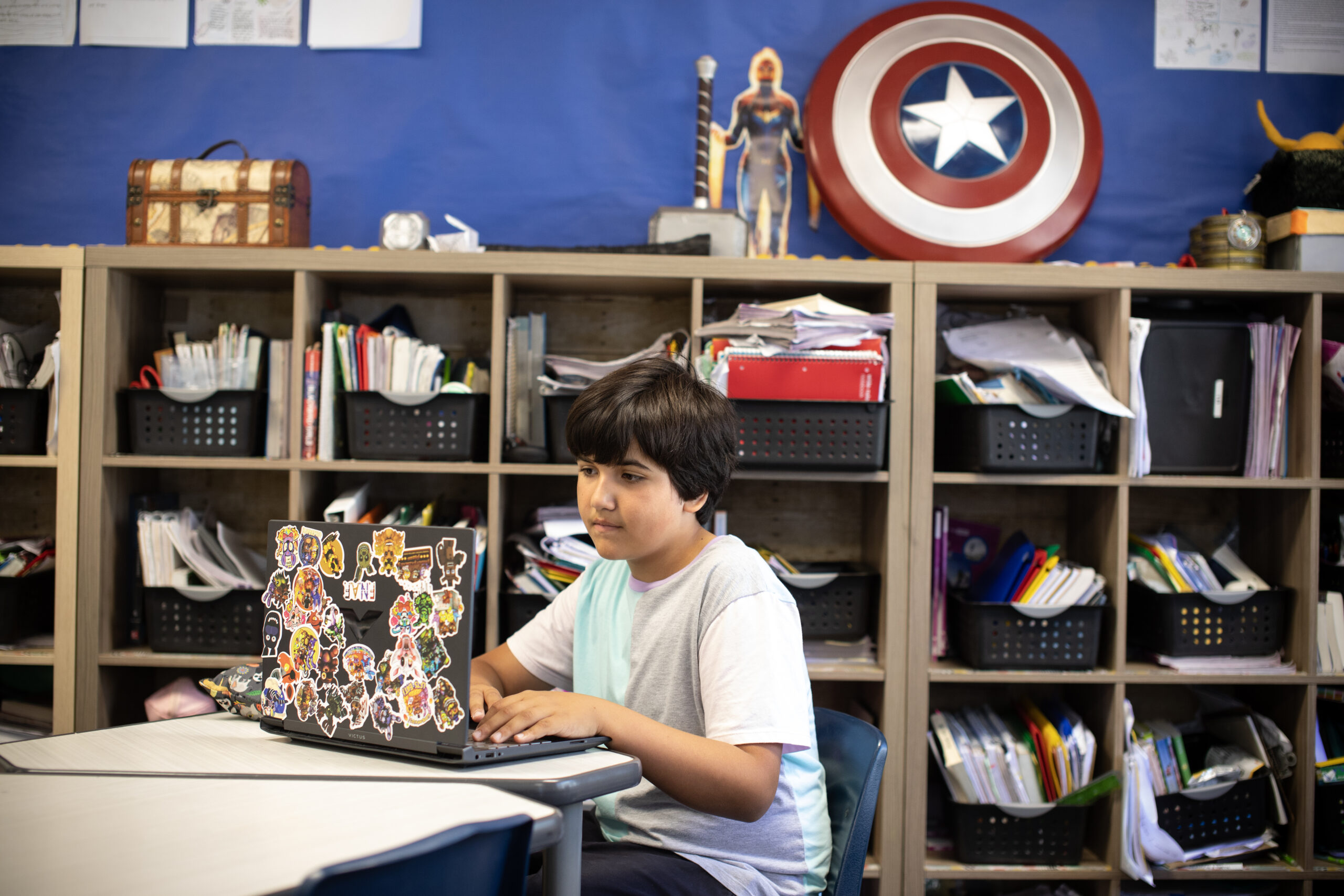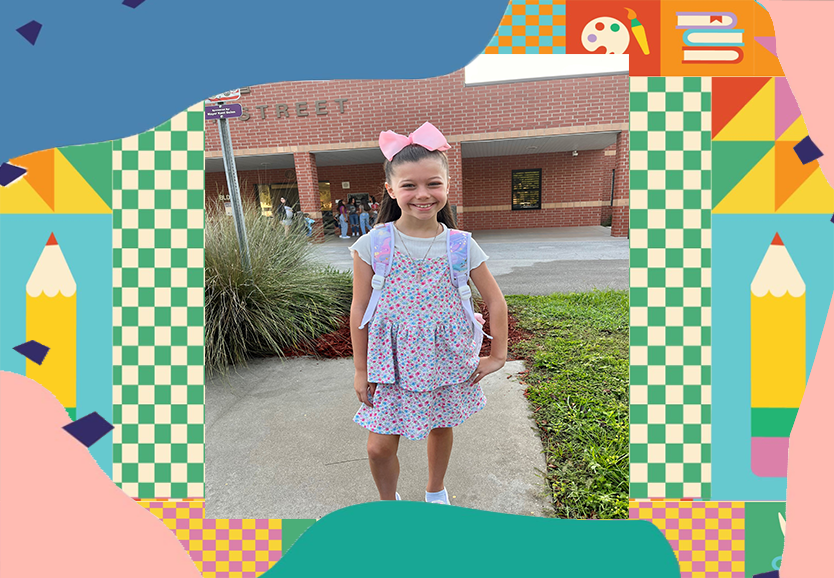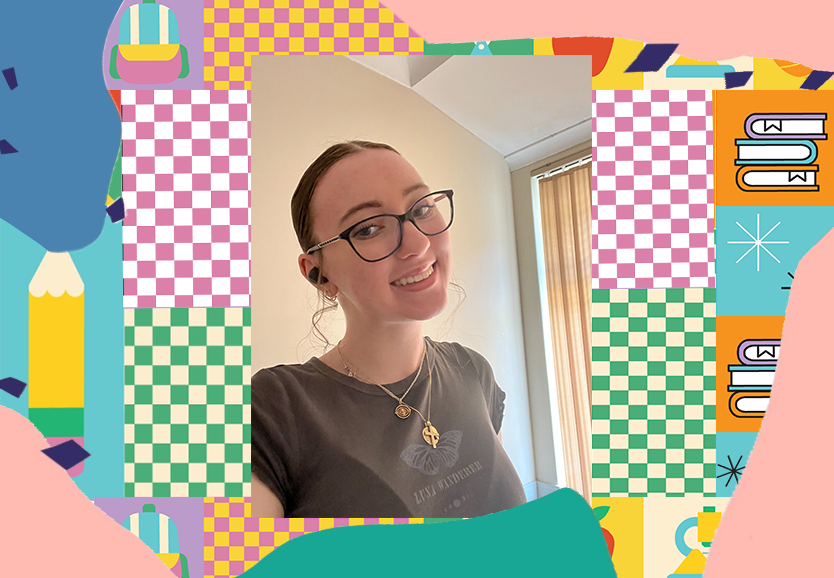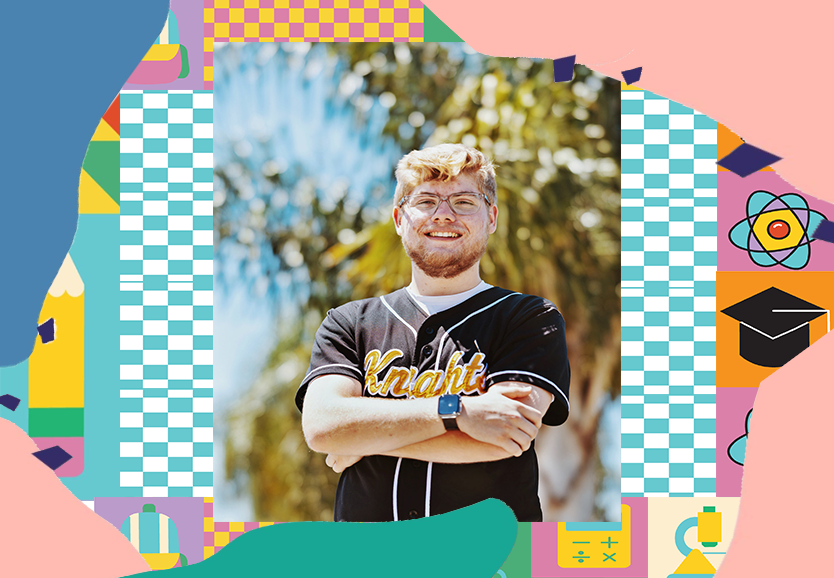Smart ways students are using AI

Honors student James Evans often will ask Microsoft Copilot for “a summary that’s a little more understandable and readable” for confusing text — a complex paragraph about a tax issue, for example — as he studies for his business degree.
“That’s one of the best uses for AI in an academic setting,” Evans says, “because sometimes you can read a paragraph five times and still not understand until the concept is explained in a different way.”
Generative AI is opening up all sorts of new avenues for learning, from personalized tutoring to study guides. But as with any technology, it’s helpful to know its strengths and limitations before diving in.
We talked with some students, parents and educators who’ve embraced the new tools for tips on how to use AI responsibly at every level to enhance learning and avoid potential pitfalls.
“The key,” says Matt Hall, a professor in Texas, “is two words: Use it. And once you’re done using it, use it again. Use it as early as possible, and learn to become a good prompt writer. Using AI is a basic life skill now, and if you’re not using it, you’ll be at a competitive disadvantage.”

Younger learners
Elementary school-aged students can benefit from programs that are powered by AI as they focus on building foundational skills. Aren Uzun, a 12-year-old seventh-grader in California, uses Reading Coach after school to help him practice reading and speaking — and says he is getting higher grades as a result.
Ava Gerlach, a 10-year-old fifth-grader in Florida, is learning about AI in Minecraft Education to get more comfortable with the new technology and the ways it can help her learn in the future.
What AI can help students do
Tools like Reading Coach — part of Learning Accelerators — can help kids boost their confidence by practicing skills with a less intimidating audience, such as before reading out loud in front of the whole class, says Aren’s mom, Cigdem Patlak Uzun. Aren is more comfortable presenting to others and is more willing to take the risk of sharing ideas now that he can test the waters first with secure AI coaches built for learning, she says.
“For some of my presentations I got lower grades, so I wanted to see exactly what I was doing wrong,” Aren says. Reading Coach showed “that I was speaking too fast and said some words incorrectly, so it helped me fix that.”
Ava says she was first introduced to the concept of AI through Minecraft Education’s Hour of Code last year, and now she can spout off an explanation at the drop of a hat: “AI is basically a human-made technology that helps people with real-world problems,” she says.
“I will probably use it as a fifth-grader to help me with research, studying and understanding the steps to math equations,” Ava says. “Especially going back to school now, I’m going to need a refresher on long division.”
Tips for using AI in learning
Kids need to learn the fundamentals first and focus on ways to build their skills with AI tools, Aren says. “You shouldn’t be using AI to figure out how to do the beginning of something,” he says. “Like, if you’re learning what 1+1 is, and AI tells you the answer is 2 but you don’t know why, then later there could be a test on what is 198+275 and you wouldn’t know how to calculate it. It’s better to use it for something that will help you forever, like how to improve your writing skills and do research for new ideas.”
The personalized guidance in Reading Coach helps keep students engaged — “almost like getting a personal tutor with one-on-one instruction,” Patlak Uzun says. Aren urges fellow students not to share personal information, such as an age or address, online and says younger kids generally should use AI alongside an adult. A recent 4H study backs that up, showing that 72% of the kids surveyed are seeking support from adults in learning how to use these new tools correctly and with confidence.
Minecraft Education has given Ava a way “to explore things in a safe context,” says Ava’s mom, Holly Gerlach. “And she’s learning about the principles of creating with AI and thinking about inclusivity, privacy and security.”

High school years
As kids get more involved with technology and start using AI, tools such as Search Coach can help by teaching information literacy and how to validate sources. Those are foundational skills students need now, says Isabelle Armstrong, a 16-year-old high school student near Perth, Australia.
What AI can help students do
Isabelle says Search Coach has helped her narrow down her prompts to be more specific, so now she gets more relevant and trustworthy answers from AI. That, in turn, has taught her how to be more concise and precise with the essays she writes for English classes. “I’m a bit of a rambler,” she says, “so this is helping me get more clear with what I’m saying and get to the point.”
AI tools can help generate ideas and assist with research, Isabelle says. “It helps kickstart the process and guide me so I’m not looking at the wrong things,” she says.
“Using AI to brainstorm can help the students work smarter, not harder,” says Kylie Kingdon, who teaches remote classes for kids spread out all over Western Australia, including Isabelle’s modern history class. Kingdon uses Copilot in class to show students various prompts and responses and help them ascertain “what’s good and what’s not. They can see what my prompts are and the answer that’s come out, and that prepares them for the future.”
The skill of learning how to use AI effectively is helpful throughout a student’s education, Kingdon says — such as realizing that if you only ask for information about “President Roosevelt” for the U.S. history class she teaches, you could get back an answer about Theodore when you meant Franklin.
Search Coach also instructs students in how to evaluate sources, Isabelle says, to get more reliable and less biased information. “We learned the difference between .com and .org and other different domains,” she says. “It’s good to see your searching habits and where you can improve and maybe branch out to different websites or domains, or change what words you use to get different answers. It helps to see your patterns.
“That’s helped me refine what I’m looking for to get better results.”
Tips for using AI in learning
Use AI as an aid to help learn subjects, but not to produce final coursework, the student and teacher both say. “You need to utilize it in a way that helps you build the skills, not just to get the work done,” Isabelle says.
AI tools won’t be available in every setting, such as exams, so it’s important to know how to do assignments yourself, she says. “Don’t rely on it as a crutch.”
It’s all about the process for her students, Kingdon adds. “It’s no longer the final result that’s important,” she says, “but giving them the tools to do all of this.”

Higher education
College and university students will find that AI can help them both in and out of the classroom, as they’re hit with intense courseloads as well as the complexity of stepping out of the childhood nest into adulthood, says Evans, the 21-year-old student from Florida who’s moving to Pennsylvania to start on a master’s degree in business analytics.
What AI can help students do
In addition to reframing complicated concepts to help him better grasp them, Evans uses AI to help create study guides or practice tests, to brainstorm essay ideas and the best structures for presentations, and to research topics.
Students now need to synthesize massive amounts of data in short periods of time, says Hall, the professor in Texas. Using Copilot for Microsoft 365 — with permission from everyone participating — to record, transcribe and summarize classes and meetings can be a huge help with that, he says. It’s also worth asking Copilot to condense reports that might be hundreds of pages long into the key points, to see if the information is relevant to a study topic and worth spending the time to fully read.
AI tools can help students learn the language of unfamiliar subjects and industries, such as helping Evans talk about warehouses, shipping and logistics for a business class. And that, along with knowing how to use new technology in general, could be valuable in landing an internship or that first job, he says.
For school projects that require creativity, Copilot can be “a pull-start lawnmower to get you going,” Hall says.
Evans says AI is helpful outside the classroom, too — especially for university students living away from their parents and “trying to figure out the logistics of life,” including activities like meal planning.
“One of the biggest things you hear everywhere is, ‘never stop learning; always be learning something new,’” Evans says. “There’s value in learning how to learn and how to constantly grow with these new tools, because we’re on the precipice and seeing this major change with technology.”
Tips for using AI in learning
Don’t use AI to write your schoolwork, Evans and Hall advise. Even though AI can write, it won’t have your voice or style, Evans says, and those are important to put out in the world. “We view AI as a co-creator or referential tool,” Hall says. “Don’t cheat yourself out of the learning journey.”
Evans recommends learning how to do something yourself before getting AI to help with it, to make sure you can assess if the final product is accurate and good.
Trust but verify, they both say. Use tools such as Copilot that provide sources and citations along with their answers, Hall says, to help with veracity checks. “At the end of the day, I’m the one who needs to make sure the information in my presentation is right,” Evans says. “And I need to learn these lessons before I get to the corporate world.”
Learn how to talk with other students about AI as well, Evans says. Some will be more comfortable than others using it for help with group projects.
Most importantly: how students use AI in the classroom will probably continue to evolve as quickly as technology itself. “Next semester my answers could change,” Evans says, “because we’re still learning it, and learning how to use it, and it’s changing with us.”
Photos, from top to bottom: Aren Uzun at Meadow Park Elementary School in Irvine, California (photo by Earnie Grafton); Ava Gerlach (photo courtesy of Holly Gerlach); Isabelle Armstrong (photo courtesy of Armstrong); James Evans (photo courtesy of Evans)

